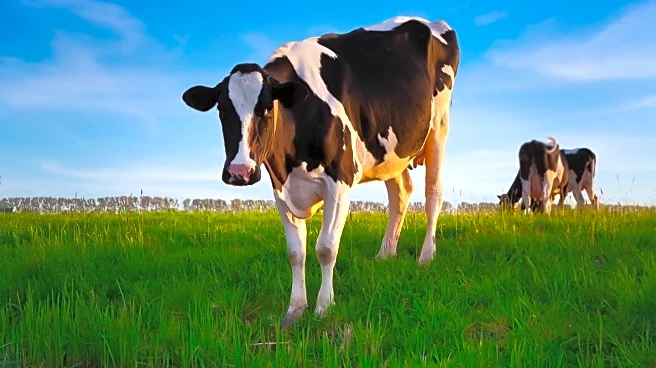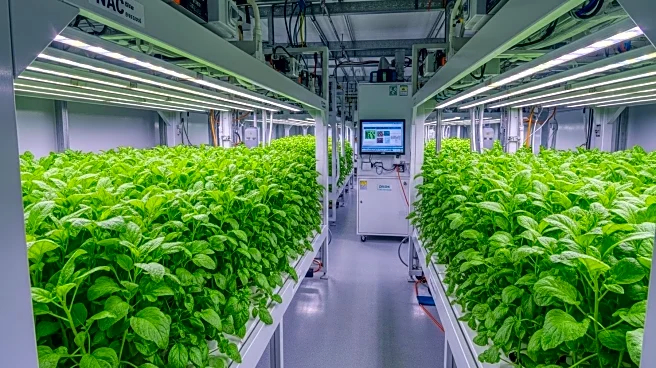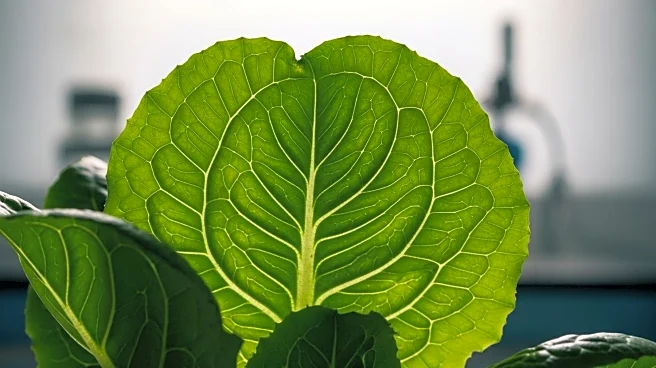What is the story about?
What's Happening?
Recent research has identified the SW14 gene as a significant factor in determining seed weight and quality in soybeans. The study involved a genome-wide association study (GWAS) of 320 soybean accessions, which revealed three loci associated with seed weight, with the SW14 locus on chromosome 14 showing the strongest association. Further analysis through QTL mapping and fine mapping narrowed down the SW14 locus to a 383-kb region. The SW14 gene was found to regulate seed weight and oil/protein content, with different haplotypes of SW14 exhibiting varying effects on these traits. The SW14H3 haplotype was associated with higher seed weight and protein content but lower oil content compared to SW14H1. The study also explored the interaction of SW14 with other proteins, such as GmLEC1a and GmLEC1b, which play roles in seed development.
Why It's Important?
The identification of the SW14 gene and its haplotypes has significant implications for soybean breeding and agriculture. By understanding the genetic factors that influence seed weight and quality, researchers can develop soybean varieties with improved yield and nutritional content. The SW14H3 haplotype, in particular, offers potential for breeding programs aimed at producing high-yield and high-quality soybeans. This research contributes to the broader goal of enhancing food security and agricultural sustainability by optimizing crop traits through genetic insights.
What's Next?
The findings suggest that the SW14H3 allele could be utilized in breeding programs to improve soybean yield and quality. Future research may focus on further characterizing the SW14 gene's interactions with other genetic factors and its role in seed development. Additionally, the study opens avenues for exploring the application of SW14 in other leguminous crops, potentially leading to broader agricultural advancements.
Beyond the Headlines
The study highlights the importance of genetic research in agriculture, emphasizing the role of natural allelic variation in crop improvement. It also underscores the potential of genetic engineering and selective breeding in addressing global food challenges. The interaction between SW14 and other proteins like GmLEC1a/b suggests complex regulatory networks that could be explored for further crop optimization.
AI Generated Content
Do you find this article useful?














